New York's 2020 skyline shown in new visualisations
These visualisations show the swathe of skyscrapers set to spring up across New York by 2020.
Created as part of a report by City Realty this week, the trio of images shows a vast increase in the number of towers in Manhattan.
The most noticeable additions to the skyline include the row of supertall towers – over 984 feet (300 metres) – along and around 57th Street, which has become known as Billionaire's Row.
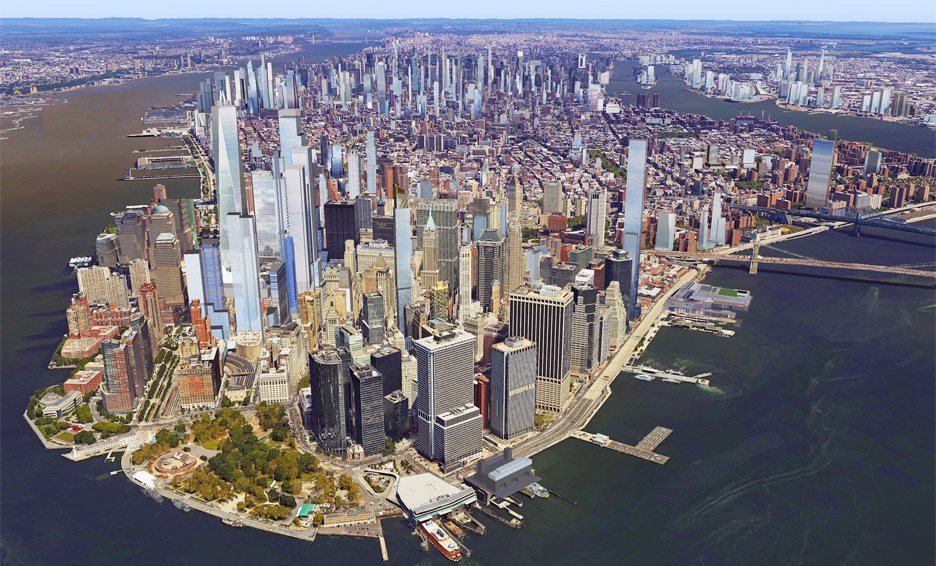
The cluster of buildings at the Hudson Yards development on the west side and the growing group of towers in the Financial District also dramatically alter the scenes.
Many of these skyscrapers will house high-end condominiums and apartments, though some will feature office space and hotels.
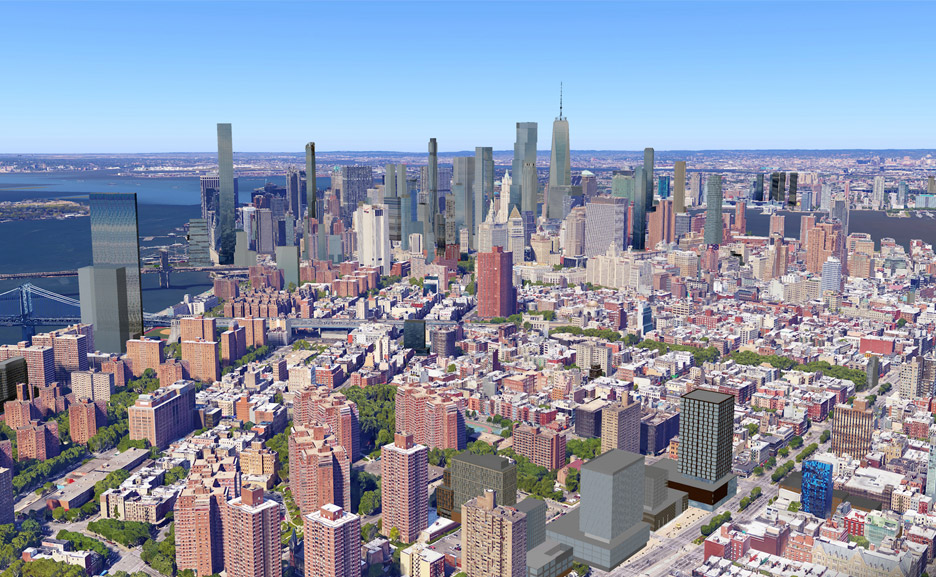
In Midtown, where much of the city's luxury residential development has occurred over the past decade, the new buildings are largely skinny skyscrapers, which residents are concerned will overshadow Central Park.
They include Jean Nouvel's 53W53, SHoP Architects' 111 West 57th Street and Christian de Portzamparc's One57 – joining Rafael Viñoly's completed 432 Park Avenue.
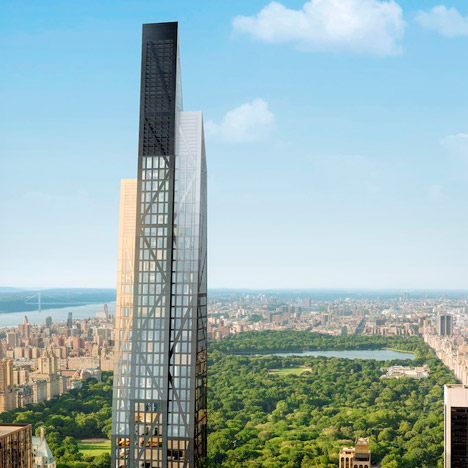
These structures are part of a wider trend in the city for "super-slenders" – typified by extreme base-width to height ratios, 18 of which are currently complete or under construction.
Downtown, the majority of new towers are bunched around One World Trade Center – currently the city's tallest building at 1,776 feet (541 metres) tall.
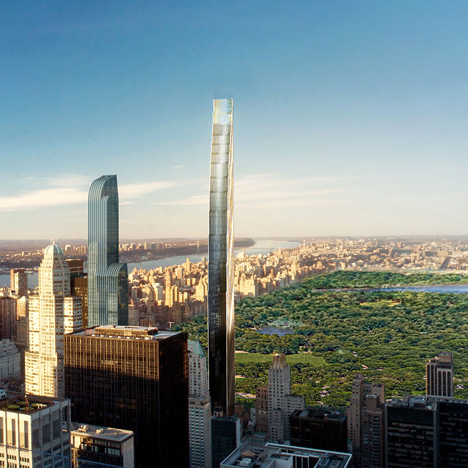
Next door, Two World Trade Center is shown as the latest design by BIG, although the developer recently revealed that he is still undecided between this and the previous design proposed by Foster + Partners.
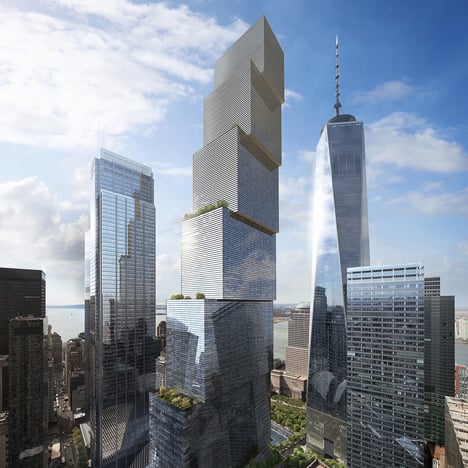
Away from this group on the other side of the island's tip, the 80 South Street site beside the East River could also receive a supertall after air rights were acquired from an adjacent lot.
City Realty's report states that roughly 1,250 new apartments are slated for the Financial District between now and the turn of the decade.
Over on the West Side, the first Hudson Yards tower by KPF completed earlier this month.
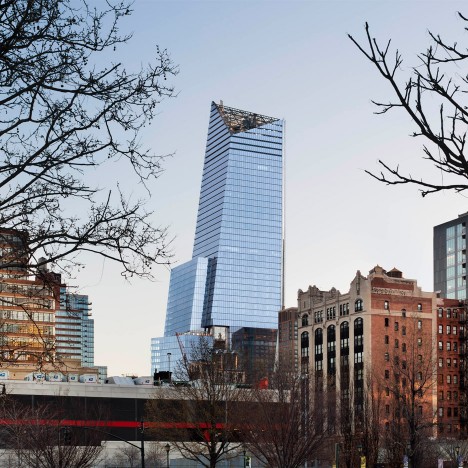
It will be joined by 15 more skyscrapers on the 28-acre (11.3 hectares) site over the next few years, creating a new array of high-rises in a previously empty patch of sky.
Others that can be spotted in the visuals include Herzog & de Meuron's Jenga-like tower in Tribeca, which Instagram users have been posting ahead of its imminent completion.
Developments in Downton Brooklyn, like the borough's first supertall tower by SHoP, and over in Jersey City can also be seen in the images.
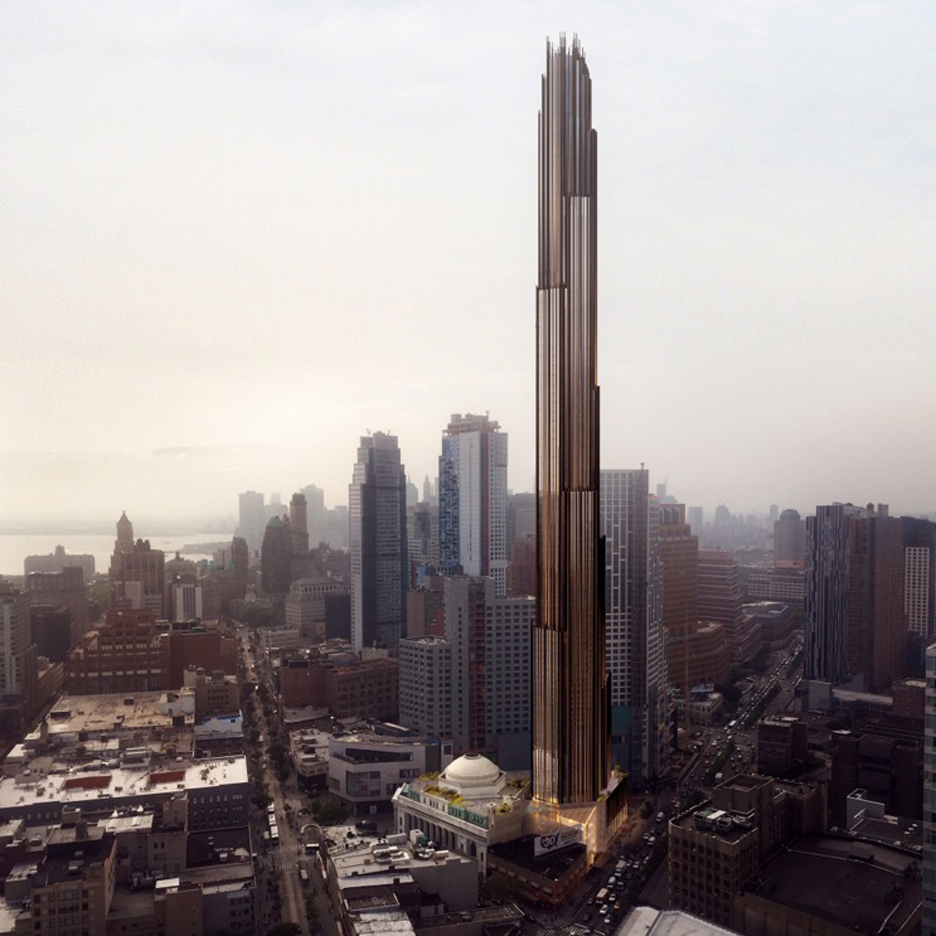
City Realty's report said that a total of 92 condominium projects with roughly 8,000 new apartments are under construction or proposed for New York.
However, it noted that fewer developers in 2016 are signing on to build skyscrapers with penthouses that cost $100 million or more.
In Opinion pieces for Dezeen last year, architect Steven Holl said that Manhattan's super-thin residential towers for the super-rich represent inequality in architectural form, while critic Aaron Betsky described the rash of skinny towers as an extreme work of art.